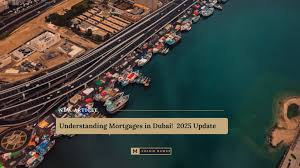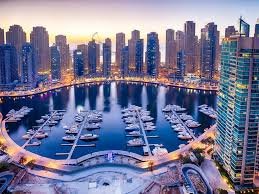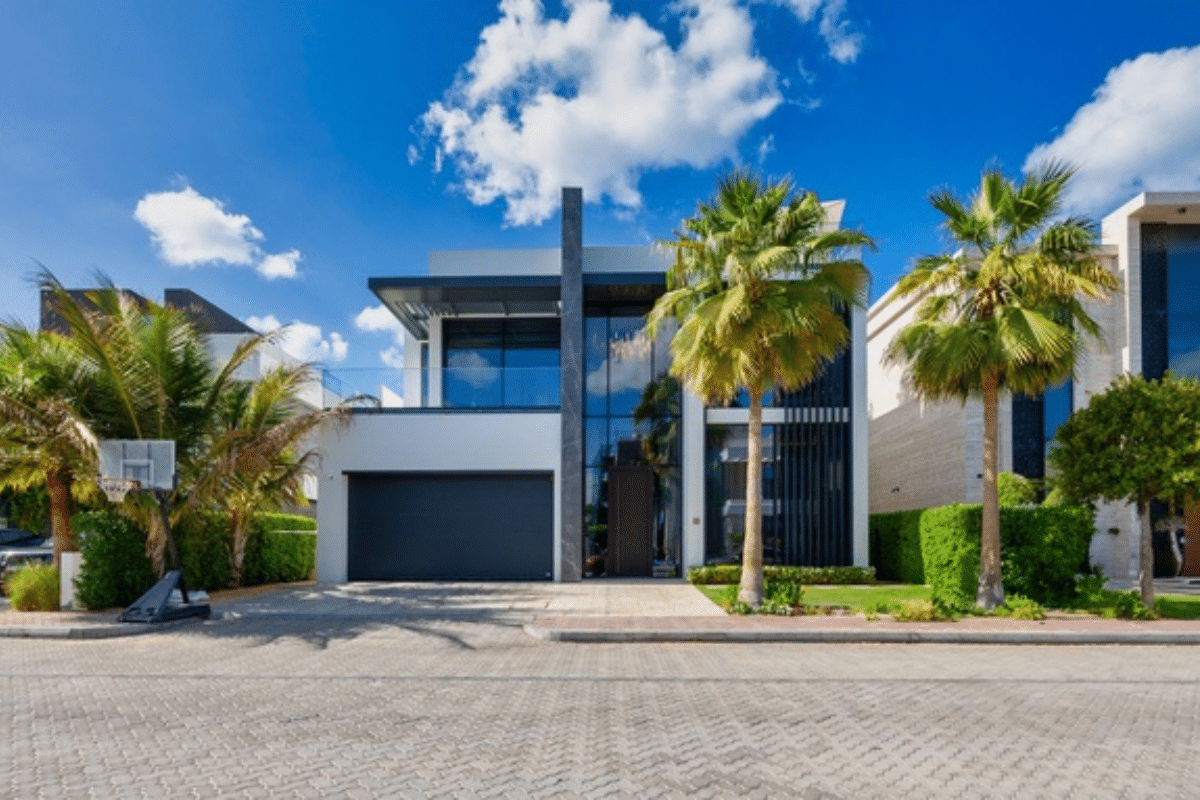Now Reading: Financing Real Estate in Dubai: Navigating Mortgage Options in 2025
-
01
Financing Real Estate in Dubai: Navigating Mortgage Options in 2025
Financing Real Estate in Dubai: Navigating Mortgage Options in 2025

Table of Contents
Financing Real Estate in Dubai: Navigating Mortgage Options in 2025
Dubai’s real estate market continues to thrive in 2025, driven by economic diversification, robust infrastructure, and investor-friendly policies under the Dubai 2040 Urban Master Plan and Dubai Clean Energy Strategy 2050. With 226,000 transactions worth AED 761 billion in 2024, the market attracts residents, expatriates, and non-residents seeking high rental yields (6–9%) and tax-free returns. Mortgages, a key financing tool, are increasingly accessible, with competitive rates (3–5%) and flexible terms from banks like Emirates NBD, Dubai Islamic Bank, and ADCB.
New regulations, such as the UAE Central Bank’s February 2025 directive, and innovative developer payment plans enhance affordability, particularly for off-plan properties. This analysis explores mortgage options, eligibility, benefits, challenges, and strategies for navigating Dubai’s financing landscape, with insights from Sharjah’s cost-effective market.
1. Overview of Real Estate Financing in Dubai

Market Context
- Market Dynamics: Dubai’s real estate recorded a 36% increase in transaction volume and 20% in value YoY in 2024, with 5% price growth projected for 2025.
- Investor Appeal: No property or capital gains tax, 6–9% rental yields, and Golden Visa eligibility (AED 2M+ investment) drive demand.
- Policy Support: Dubai 2040 Urban Master Plan promotes sustainable development, while Law No. 16 of 2023 mandates green standards, boosting eco-friendly projects.web:xAI:SmartHomes
- Financing Trends: Mortgages accounted for 43% of ready sales in Q2 2024, up from 35% in 2023, due to lower interest rates and competitive lending.
Financing Options
- Conventional Mortgages: Fixed or variable-rate loans from banks, financing up to 80% for residents and 50–60% for non-residents.
- Islamic Financing: Sharia-compliant options like Ijara (lease-to-own) or Murabaha (cost-plus financing), offered by Dubai Islamic Bank and ADIB.
- Developer Payment Plans: Flexible, interest-free installment plans for off-plan properties, often requiring 10–50% during construction.
- Private Lending: High-net-worth individuals or firms offer loans with higher rates but fewer restrictions, suitable for unique projects.
Comparison to Sharjah
- Sharjah’s Financing: Offers similar mortgage options but with lower property prices (AED 639K–1.5M vs. Dubai’s AED 1.5M–5M), appealing to budget-conscious buyers. Developer plans in projects like Aljada require 5–10% down payments.
- Advantages: Dubai’s global investor base and higher ROI (6–9% vs. Sharjah’s 5–7%) contrast with Sharjah’s affordability and simpler compliance.
2. Mortgage Options in Dubai (2025)
Types of Mortgages
- Fixed-Rate Mortgages:
- Features: Stable interest rates (3–5%) for 1–5 years, reverting to variable rates based on EIBOR + margin (1.45–2.99%).
- Pros: Predictable payments, ideal for long-term planning.
- Cons: Higher initial rates than variable options.
- Providers: Emirates NBD, HSBC, ADCB (up to 85% financing for UAE nationals, 80% for expats).
- Variable-Rate Mortgages:
- Features: Rates fluctuate with EIBOR (1.45% in 2025), starting lower than fixed rates.
- Pros: Lower initial payments, benefits from rate drops.
- Cons: Risk of rising payments if EIBOR increases.
- Providers: Mashreq, Standard Chartered.
- Islamic Home Financing:
- Features: Sharia-compliant, no interest; uses profit-sharing or leasing models. ADIB’s partnership with Binghatti offers financing at 35% construction completion.
- Pros: Aligns with ethical preferences, competitive terms.
- Cons: Limited availability, complex contracts.
- Providers: Dubai Islamic Bank, ADIB.
- Interest-Only Mortgages:
- Features: Pay only interest for up to 5 years, reducing initial costs.
- Pros: Lower early payments, suits investors.
- Cons: Principal remains unpaid, shorter terms.
- Providers: Select banks, subject to client profile.
New Mortgage Structures
- Bank-Financed Off-Plan: Buyers pay 50% during construction (10% initial + 40% in installments), banks cover 10% during construction and 40% at handover, repayable over 25 years.
- Example: For a AED 2M off-plan property (handover Q2 2028):
- Initial: AED 200K (10%) + 4% DLD fee (AED 80K).
- Construction (15 months): AED 800K (40%) in quarterly 10% payments.
- Bank: AED 200K (10%) during construction, AED 800K (40%) at handover.
- Buyer repays AED 1M (50%) over 25 years, easing cash flow.
Regulatory Changes
- UAE Central Bank Directive (Feb 2025): Banks cannot finance DLD fees (4%) or broker commissions (2%), requiring buyers to pay AED 60K–120K upfront for a AED 2M property.
- Impact: Increases liquidity needs but boosts off-plan demand due to developer waivers and 0% interest plans.
Comparison to Sharjah
- Mortgage Terms: Sharjah banks offer up to 75% financing, with 25% down payments for expats, and lower rates (2.5–4%) due to smaller market risks.
- Developer Plans: Aljada’s 5–10% initial payments and 3–5-year plans are more accessible than Dubai’s 10–50% construction-phase payments.
3. Eligibility and Application Process
Eligibility Criteria
- Residents:
- Minimum salary: AED 7,000 (UAE nationals), AED 10,000 (expats).
- Debt burden ratio: Monthly repayments < 50% of income.
- Credit score: Good rating required, verified via Al Etihad Credit Bureau.
- Non-Residents:
- Minimum salary: AED 15,000 or equivalent, with stable income proof (tax returns, salary slips).
- Down payment: 25–30% (vs. 20% for residents).
- Approved employers: Some banks prioritize specific companies.
- Property Types: Ready properties with title deeds, select off-plan projects from approved developers (e.g., Emaar, DAMAC). Plots/farms limited to UAE nationals.
Required Documents
- Passport, Emirates ID, visa (residents).
- Salary slips (3–6 months), bank statements (6 months).
- Tax returns, business documents (non-residents, self-employed).
- Property details: Sales agreement, title deed, or developer NOC.
- Valuation fee: AED 2,500–3,500, paid to bank.
Application Process
- Pre-Approval: Submit documents to bank or broker (e.g., Mortgage Finder, Bayut-ADCB). Receive pre-approval letter (valid 60–90 days) with borrowing limit.
- Property Selection: Choose property, finalize sales agreement.
- Valuation: Bank assesses property value (AED 2,500 fee).
- Final Approval: Bank issues loan agreement, buyer pays down payment.
- Registration: Mortgage registered with Dubai Land Department (DLD), 4% fee paid upfront.
- Disbursement: Loan funds transferred to seller/developer.
- Timeline: 2–4 weeks with brokers like Mortgage Finder, faster for Bayut-ADCB’s instant pre-approvals.
Tips
- Use brokers for better rates and developer-linked approvals.
- Check Souqalmal.com or Mortgage Finder for loan comparisons.
- Ensure DLD fee (4%) and broker commission (2%) liquidity per Feb 2025 rules.
Financial
- Affordability: Spread payments over 25 years, with monthly mortgage often less than rent (e.g., AED 5K vs. AED 7K in Dubai Hills).
- High ROI: 6–9% rental yields, 5–10% annual appreciation in prime areas like Emaar Beachfront.
- Tax Benefits: No property or capital gains tax, deductible mortgage interest for corporate investors.web:xAI:NavigatingCorporateTaxCompliance
Lifestyle
- Ownership: Build equity vs. renting, ideal for long-term residents.
- Golden Visa: AED 2M+ investment qualifies for 10-year residency, enhancing stability.
- Flexibility: Off-plan plans reduce upfront costs, suiting first-time buyers.
Market
- Accessibility: Non-residents and expats access mortgages, with 50–60% financing.
- Sustainability: Financing green projects (e.g., The Sustainable City) aligns with Net-Zero 2050.web:xAI:Net-ZeroEnergyHomes
Comparison to Sharjah
- Benefits: Sharjah offers lower entry costs (AED 639K vs. AED 2M) and 5–7% yields, but Dubai’s higher appreciation (5–10% vs. 3–5%) and global demand drive premium returns.
5. Challenges in Financing Real Estate
Financial
- Upfront Costs: 20–30% down payment (AED 400K–600K for AED 2M property), plus DLD (4%) and broker fees (2%).
- Interest Rates: Variable rates risk rising with EIBOR, increasing payments.
- Valuation Fees: AED 2,500–3,500 per property, non-refunded if loan denied.
Regulatory
- Feb 2025 Directive: Buyers must pay DLD and broker fees upfront, adding AED 60K–120K for AED 2M properties.
- Corporate Tax (CT): 9% on profits > AED 375,000, with audits for revenues > AED 50M, impacts investor returns.web:xAI:NavigatingCorporateTaxCompliance
- Transfer Pricing (TP): RPTs > AED 40M require documentation, with AED 1M penalties for non-compliance.web:xAI:TransferPricing
Market
- Supply Pressure: 76,000 new units in 2025 may cap price growth in non-prime areas like Dubailand.web:xAI:SmartHomes
- Global Risks: Oil price fluctuations and rising global interest rates could dampen demand.
Technical
- Eligibility Barriers: Non-residents face stricter criteria (25–30% down, higher income proof).
- Developer Risks: Off-plan projects may face delays, affecting financing schedules.
Comparison to Sharjah
- Challenges: Sharjah’s lower costs ease liquidity needs, but its smaller market limits financing options and ROI compared to Dubai’s diverse, high-yield opportunities.
6. Strategies for Navigating Mortgage Options
Investment Strategies
- Target Off-Plan Properties:
- Invest in projects like Emaar Beachfront or Sobha Hartland with 40/60 plans (20% now, 60% at handover).
- Example: AED 2M Sobha villa yields 7–9% ROI, with AED 400K initial payment.
- Leverage Developer Plans:
- Prime Areas:
- Sharjah Diversification:
- Allocate 20–30% to Aljada (AED 639K–1.5M, 5–7% ROI) for lower-risk exposure.
Operational Strategies
- Compliance Readiness:
- Register with EmaraTax by March 31, 2025, use TPGenie for TP documentation.web:xAI:TransferPricing
- Engage Deloitte or KPMG for CT and DMTT (15% for MNEs) compliance.web:xAI:NavigatingCorporateTaxCompliance
- Broker Support:
- Use Mortgage Finder or Bayut-ADCB for instant pre-approvals, saving 30–40% time.
- Partner with RERA-licensed agents for transparent deals.
- Financial Planning:
- Budget AED 60K–120K for DLD/broker fees per Feb 2025 rules.
- Use Dubai mortgage calculators (e.g., Mortgage Finder) for precise payment estimates.
Sustainability Strategies
- Green Financing:
- Target LEED-certified projects (e.g., The Sustainable City) with bank incentives for 10–15% value premiums.web:xAI:Net-ZeroEnergyHomes
- Smart Homes:
- Finance IoT-enabled properties for 20–30% utility savings, boosting ROI.web:xAI:SmartHomes
- Community Investments:
Risk Mitigation
- Liquidity Management:
- Secure personal loans for DLD/broker fees if cash-constrained.
- Use high-value employment tax credits (10–15% on salaries, e.g., AED 300K on AED 3M) to offset costs.web:xAI:High-ValueEmploymentTaxCredits
- Market Monitoring:
- Track DLD and Dubai REST data to avoid oversupplied areas, focusing on metro-connected zones.web:xAI:SmartHomes
- Developer Due Diligence:
7. Recommendations for 2025

- Immediate Actions (Q1–Q2 2025):
- Action: Register with EmaraTax by March 31, 2025, and secure pre-approval via Mortgage Finder for AED 2M off-plan villa (20% down, AED 400K).
- Example: Emaar Beachfront apartment (AED 2M) yields 7–9% ROI, with AED 80K DLD fee upfront.
- Rationale: Ensures compliance, locks in low rates (3–5%).
- Strategic Financing (2025):
- Action: Opt for 40/60 off-plan plans in Dubai Creek Harbour or Sobha Hartland, using bank financing for 50% at handover.
- Example: AED 3M Sobha villa, AED 600K initial, yields 6–8% ROI.
- Rationale: Balances liquidity, maximizes returns.
- Sharjah Integration:
- Action: Invest 20–30% in Aljada (AED 1M, 5–7% yield) with 10% down payment plans.
- Example: AED 639K apartment saves AED 30K annually in utilities.
- Rationale: Diversifies risk, leverages affordability.
- Long-Term Vision (2026–2040):
- Action: Finance sustainable, smart homes in Emaar South or The Valley for 7–10% ROI by 2035, targeting 25M tourists by 2026.web:xAI:SmartHomes
- Example: AED 2.5M smart villa yields AED 150K–200K annually.
- Rationale: Aligns with Net-Zero 2050 and tourism growth.
- Operational Excellence:
- Use PropTech (Dubai REST, TPGenie), engage KPMG for compliance, and apply for Emirates Energy Award 2025 by March 1, 2025.web:xAI:Net-ZeroEnergyHomes
Conclusion
In 2025, financing real estate in Dubai is more accessible than ever, with mortgages offering 3–5% rates, up to 80% financing, and flexible off-plan plans. Supported by the Dubai 2040 Urban Master Plan and new bank structures, buyers can achieve 6–9% yields and 5–10% appreciation in prime areas. Challenges like upfront DLD fees, CT compliance, and 76,000-unit supply require strategic planning, broker support, and PropTech adoption. Sharjah’s affordable financing complements Dubai’s premium market, offering diversification. By leveraging low rates, green incentives, and metro-connected investments, buyers and investors can navigate Dubai’s dynamic mortgage landscape to build wealth and secure sustainable, high-return properties by 2040.
Overview
- Market: AED 761B in 2024 transactions, 6–9% yields, 5% price growth in 2025.
- Options: Conventional mortgages (80% residents, 50–60% non-residents), Islamic financing, developer plans, private lending.
- Policies: Dubai 2040 Urban Master Plan, Law No. 16 of 2023, Feb 2025 Central Bank directive (no DLD fee financing).
- Sharjah: Lower prices (AED 639K–1.5M), 5–7% yields, simpler terms.
Mortgage Options
- Fixed-Rate: 3–5% for 1–5 years, predictable (Emirates NBD, ADCB).
- Variable-Rate: EIBOR-based (1.45%), lower initial costs, riskier (Mashreq).
- Islamic: Sharia-compliant Ijara/Murabaha (ADIB, Binghatti at 35% completion).
- Interest-Only: 5-year terms, investor-friendly.
- Off-Plan: 50% buyer, 50% bank (10% + 40% at handover), 25-year repayment.
- Sharjah: 75% financing, 25% down, 2.5–4% rates.
Eligibility & Process
- Residents: AED 7K–10K salary, <50% debt ratio, 20% down.
- Non-Residents: AED 15K salary, 25–30% down, tax returns.
- Documents: Passport, salary slips, bank statements, property details.
- Steps: Pre-approval (60–90 days), valuation (AED 2,500), DLD registration (4% fee).
- Tips: Use Mortgage Finder, Souqalmal.com, budget DLD/broker fees.
Benefits
- Financial: Lower payments vs. rent (AED 5K vs. 7K), 6–9% yields, no taxes.
- Lifestyle: Equity, Golden Visa (AED 2M+), off-plan flexibility.
- Sustainability: Green projects align with Net-Zero 2050.web:xAI:Net-ZeroEnergyHomes
- Sharjah: Lower costs, 5–7% yields, less appreciation.
Challenges

- Financial: 20–30% down, AED 60K–120K DLD/broker fees, valuation costs.
- Regulatory: 9% CT, TP (RPTs > AED 40M), AED 1M penalties.web:xAI:TransferPricing
- Market: 76,000-unit supply, oil price risks.web:xAI:SmartHomes
- Technical: Stricter non-resident criteria, off-plan delays.
Strategies
Investment
- Off-Plan: Emaar Beachfront, Sobha (AED 2M, 7–9% ROI).
- Developer Plans: 0% interest, 35% completion financing.
- Prime Areas: Dubai Hills, Creek Harbour (5–10% growth).
- Sharjah: 20–30% in Aljada (AED 1M, 5–7% ROI).
Operational
- Compliance: EmaraTax by March 31, 2025, TPGenie, KPMG.web:xAI:TransferPricing
- Brokers: Mortgage Finder, Bayut-ADCB (30–40% time saved).
- Planning: Budget DLD fees, use calculators.
Sustainability
- Green Financing: LEED projects (10–15% premiums).web:xAI:Net-ZeroEnergyHomes
- Smart Homes: IoT for 20–30% savings.web:xAI:SmartHomes
- Communities: Emaar South for appreciation.
WATCH MORE
READ MORE: Legal Framework for Foreign Property Ownership in Dubai: What Changed in 2025?






















